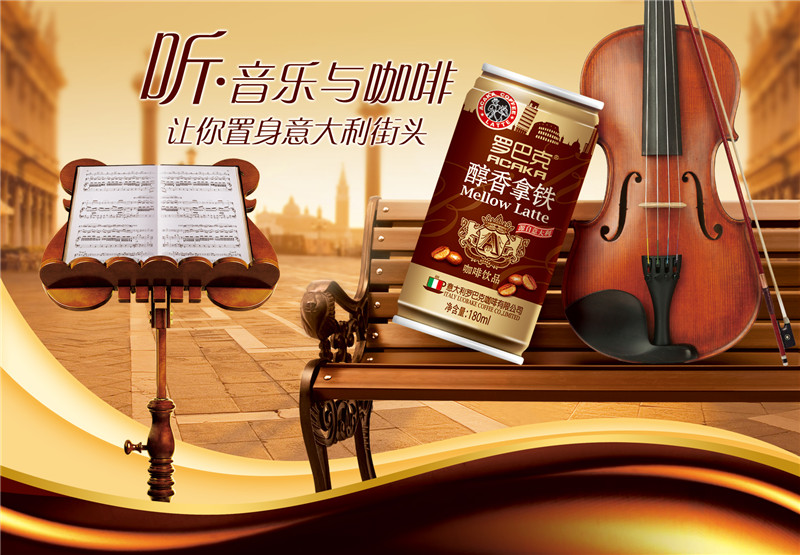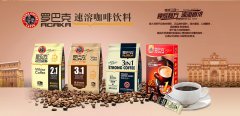The origin of the latte comes from the transliteration of the Italian "Latte"

Latte is the transliteration of Italian "Latte". It is a kind of fancy coffee and the perfect combination of coffee and milk, retaining the mellow taste of coffee and the smoothness of milk. "I'm not at the cafe. I'm on my way to the cafe." A musician once said such a sentence in Vienna. In Vienna, the smell of coffee can be smelled everywhere, dancing to the music in the air. Among them, there was a man named Kochsky, who was the first person to incorporate milk into coffee and the first person to open a coffee shop in Vienna.
In 1683, the Turkish army launched its second attack on Vienna. The then Emperor Augustus I of Vienna signed an offensive and defensive alliance with King Augustus II of Poland. As soon as Turkey launched an offensive against Vienna, the Poles would quickly send reinforcements when they heard the news. However, now we are faced with a very serious problem: who will send letters to the Poles under the heavy siege of the Turkish army? At this time, Kochsky, a Viennese, volunteered to come forward and, with his experience of traveling in Turkey, deceived the besieged army with fluent Turkish, went through many tribulations and crossed the Danube. Rescue troops-Polish troops-were brought to Vienna.
Under the internal and external attack of the Polish and Viennese armies, despite their valiant fighting, the Ottoman army finally fled without taking away a large number of military supplies, including 500 bags of coffee beans. Coffee beans, which had been controlled by the Muslim world for centuries, easily fell into the hands of the Viennese in this battle. However, the Viennese did not know what coffee beans were, and only the knowledgeable Kochsky knew that it was a dark but magical drink. So he asked for the 500 bags of coffee beans as a reward and used the 500 bags of coffee beans to open the first coffee shop in Vienna, Blue bottle.
Because Viennese come into contact with coffee for the first time and are not used to thick black and bitter coffee, the business of the cafe is not good. Later, by improving the formula, the witty Kochsky filtered out the coffee grounds and added milk to dilute the bitter taste of the coffee and replace it with the smooth mellow flavor of the milk. As a result, the latte was born!
Important Notice :
前街咖啡 FrontStreet Coffee has moved to new addredd:
FrontStreet Coffee Address: 315,Donghua East Road,GuangZhou
Tel:020 38364473
- Prev

What is the demand for coffee in China?
With the globalization of economy and trade, China has introduced a lot of foreign brands, including successful examples and failure cases, and the most important thing often does not depend on the business model of foreign brands, but on the understanding of Chinese market consumers. When it comes to the most successful case, Western retail concept foreign coffee shops are booming in China. According to a report on the Financial Times website on December 29,
- Next

Nine myths about Coffee drinking Coffee increases the risk of Diabetes?
Coffee is the first pick-me-up for many people, but many people think that in addition to refreshing, drinking coffee is not good, but will cause great harm to the body. Shenzhen coffee machine rental about the efficacy of coffee, there are still a lot of misunderstandings, let's take a look at it with the editor. Misunderstanding one, drinking coffee will make you fat? Coffee is good for the skin. Coffee can promote metabolic function.
Related
- Beginners will see the "Coffee pull flower" guide!
- What is the difference between ice blog purified milk and ordinary milk coffee?
- Why is the Philippines the largest producer of crops in Liberia?
- For coffee extraction, should the fine powder be retained?
- How does extracted espresso fill pressed powder? How much strength does it take to press the powder?
- How to make jasmine cold extract coffee? Is the jasmine + latte good?
- Will this little toy really make the coffee taste better? How does Lily Drip affect coffee extraction?
- Will the action of slapping the filter cup also affect coffee extraction?
- What's the difference between powder-to-water ratio and powder-to-liquid ratio?
- What is the Ethiopian local species? What does it have to do with Heirloom native species?

